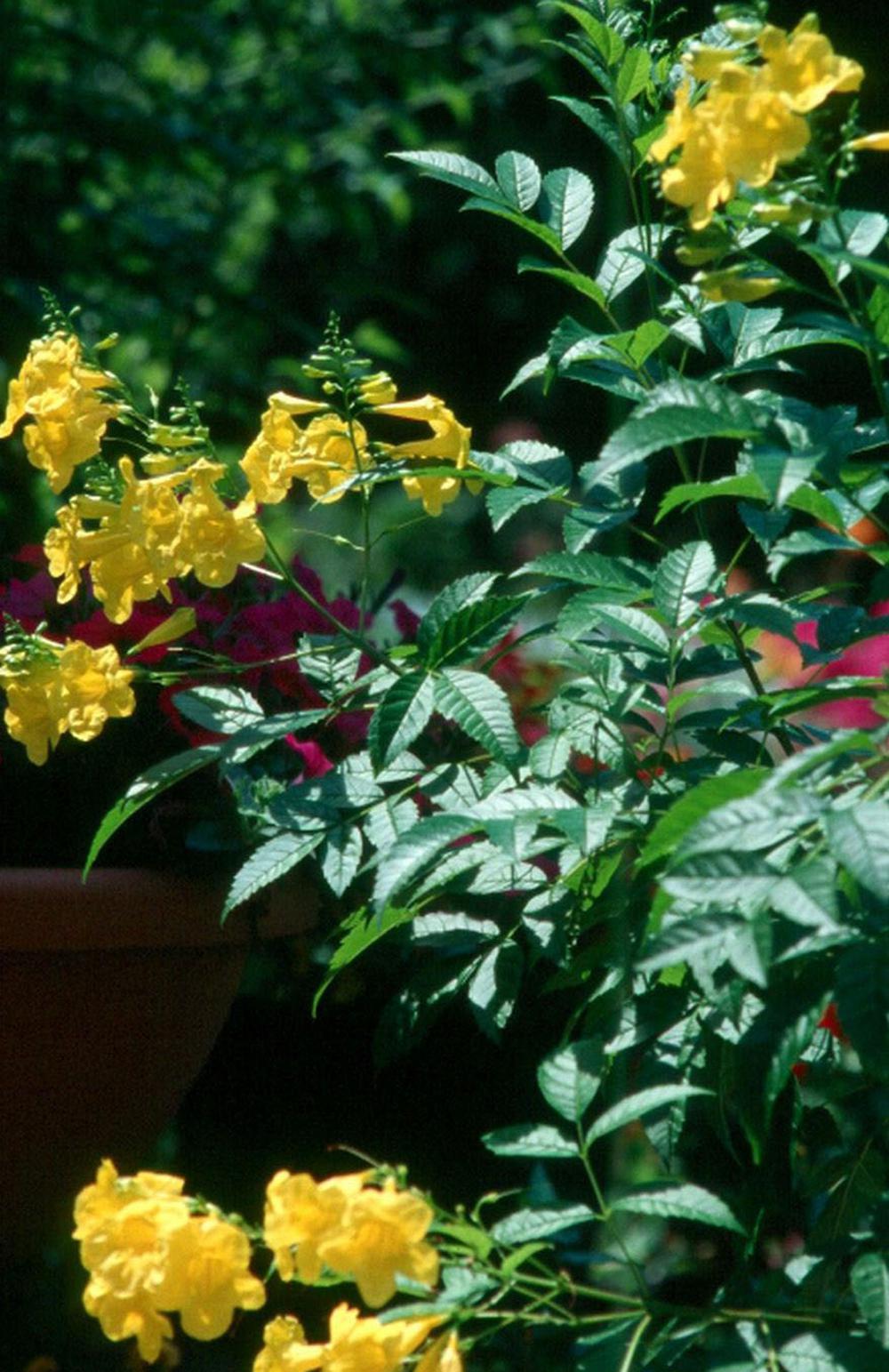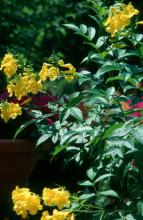Information Possibly Outdated
The information presented on this page was originally released on July 21, 2003. It may not be outdated, but please search our site for more current information. If you plan to quote or reference this information in a publication, please check with the Extension specialist or author before proceeding.
Gold Star esperanza a winner everywhere
By Norman Winter
MSU Horticulturist
Central Mississippi Research & Extension Center
Yellow bells, or Gold Star esperanza, has become a hot plant in the past couple of years. As a testament to its showy nature, people are buying it despite not knowing much about it.
The Gold Star is known botanically as Tecoma stans and is in the family known as Bignoniaceae, which means it is related to our native cross-vine. It is a tropical native to the warmest parts of the United States, Mexico and South America. It is listed as a zone 9 or higher plant. I have had several gardeners tell me they have coaxed the Gold Star through the winter with an added layer of mulch.
In Mississippi, we normally expect them to reach 3 to 4 feet tall and mounding. They are much larger in frost-free areas.
It was chosen as a Texas Superstar winner and judging from the many satisfied gardeners in Mississippi, it could also qualify as a Mississippi Medallion award winner. This evergreen shrub produces yellow, bell-shaped flowers from spring through frost. It practically laughs at the full-sun heat in July and August.
The striking flowers are complemented by dark green, glossy foliage. Butterflies and hummingbirds relish the yellow bells' nectar.
Select a site in full sun for best blooming, but they also perform nicely in morning sun and afternoon shade. Grow them in large containers around the porch, patio or deck, or plant in fertile, well-drained soil in the tropical-style garden. Amend heavy, poorly drained soil with the addition of 3 to 4 inches of organic matter and till to a depth of 8 to 10 inches.
While preparing the soil, incorporate 2 pounds of a slow-release, 12-6-6 fertilizer per 100 square feet of planting area. Dig the planting hole two to three times as large as the root ball and plant at the same depth it is growing in the container.
Feed container-grown plants with a diluted water-soluble 20-20-20 fertilizer every other week or use controlled-release granules according to the formula recommendation. Keep in mind that daily watering and high temperatures usually mean fertilizing more often. Feed those in the landscape every four to six weeks with light applications of fertilizer.
Remove seedpods as they form to keep flowers producing, or save a few seeds for planting indoors next winter. They are also easy to propagate from cuttings, and the smaller plants are easier to overwinter.
Use the Gold Star around the pool for a look of the islands. Grow under tall bananas or upright elephant ears. Combine with other hummingbird-attracting plants like the Brazilian sage or bog sage, or even our annual red salvia. Also try it in front of dark purple forms of buddleia.
The yellow bells plant is often sold generically, but the variety name Gold Star esperanza from the Texas Super Star program is spreading across the country.
It is fun to grow tropicals at our homes, and it is especially nice when they bloom non-stop. This represents good value for your dollar whether you want to protect through the winter or start over next spring.



